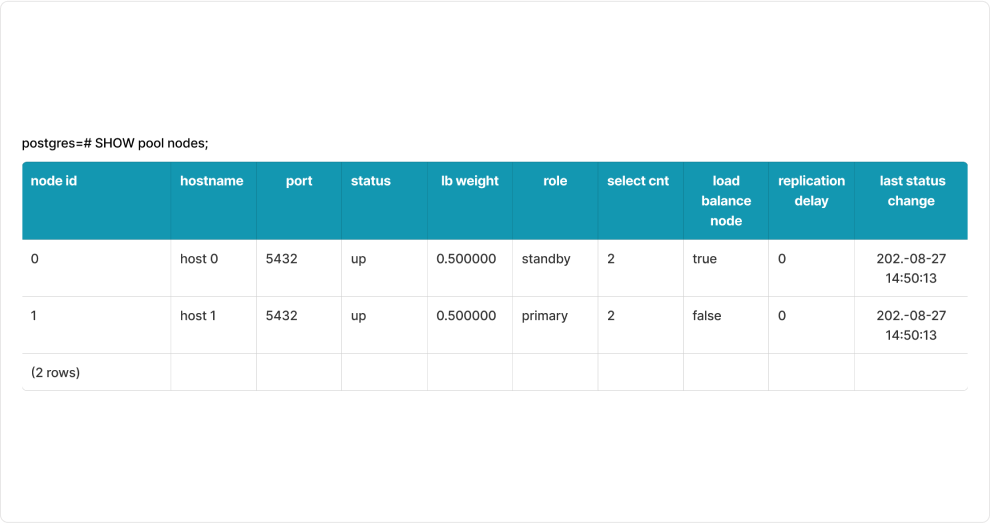Project Name
E-Commerce Database Resilience: Kubernetes PostgreSQL Cluster Deployment
Overview
Our client belongs to the E-Commerce Industry which operates in a highly competitive environment. They work on processing real-time data and availability and commit to delivering the right powerful experience to their consumers. Moreover, they are looking for the right approach where they can manage the database infrastructure to support all their operations.
Challenges
- They encountered regular database outages that resulted in service disruptions and financial losses.
- It becomes quite difficult for them to scale the database horizontally to observe the data loads proved to be challenging with their existing setup.
Our Solution
Kubernetes Deployment
Containerization with Docker:
- Utilize Docker to encapsulate PostgreSQL instances and their dependencies into containers.
- Docker ensures consistency across different environments, making it easier to deploy and manage applications.
Kubernetes Cluster Setup:
- Establish a Kubernetes cluster with master and worker nodes.
- Kubernetes provides a platform-agnostic environment for orchestrating containerized applications, ensuring scalability, and facilitating easy management.
Deployment Configuration:
- Define Kubernetes manifests (YAML files) specifying the desired state of the PostgreSQL cluster.
- Include details such as the number of replicas, resource requirements, and networking configurations.
- This step ensures that Kubernetes deploys and maintains the specified number of PostgreSQL instances with the desired configurations.
PostgreSQL Cluster Configuration
Cluster Topology:
- Deploy three PostgreSQL nodes distributed across different Kubernetes nodes to ensure high availability.
- Adopt a primary-secondary-replica configuration to distribute read and write loads efficiently.
Synchronous Replication:
- Configure synchronous replication between the primary and secondary nodes.
- Ensure that data changes are replicated immediately to guarantee consistency across the PostgreSQL cluster.
Failover Mechanism:
- Implement an automatic failover mechanism.
- If the primary node becomes unavailable, one of the secondary nodes is automatically promoted to the primary role to maintain continuous operation.
PGPOOL Integration and Benefits
Connection Pooling Efficiency:
- Issue: Inefficient resource utilization with traditional database connections, especially in high-traffic scenarios.
- Solution: pgPool efficiently manages and reuses database connections, reducing overhead in creating new connections for each operation.
Load Balancing:
- Issue: Uneven distribution of database queries can lead to suboptimal performance.
- Solution: pgPool integrates load balancing, distributing queries evenly across PostgreSQL nodes, optimizing resource usage, and enhancing performance.
Failover Handling:
- Issue: Seamless transition to a standby node in the event of a primary node failure is crucial.
- Solution: pgPool monitors nodes and enables automatic failover, ensuring continuous operation by promoting a standby node to the primary role.
Read-Write Splitting:
- Issue: Traditional setups routing all queries to the primary node limit scalability for read-heavy workloads.
- Solution: pgPool supports read-write splitting, directing read queries to standby nodes, distributing the workload, and improving overall database performance.
Connection Pooling for High Concurrency:
- Issue: Efficiently handling a high volume of concurrent connections is essential for database performance.
- Solution: pgPool excels in connection pooling, managing and reusing connections efficiently, and accommodating high concurrency without a proportional increase in resource consumption.
Query Caching:
- Issue: Frequent execution of similar queries strains database resources.
- Solution: pgPool provides query caching, reducing the load on the database by caching frequently executed queries, and improving response times for repetitive operations.
Transparent to Applications:
- Issue: Complex implementation of load balancing and failover mechanisms may require changes to application logic.
- Solution: pgPool operates transparently to applications, handling load balancing and failover behind the scenes without application-level modifications.
Real-time Monitoring:
- Issue: Identifying performance bottlenecks and monitoring node health is crucial.
- Solution: pgPool offers real-time monitoring, providing insights into PostgreSQL nodes' status, allowing proactive issue resolution and performance optimization.
Enhanced Scalability:
- Issue: Scaling horizontally efficiently can be challenging without load balancing.
- Solution: pgPool's load balancing capabilities enhance scalability by evenly distributing queries, facilitating horizontal scaling without overloading individual nodes.
Centralized Management:
- Issue: Managing and monitoring multiple PostgreSQL nodes individually is time-consuming.
- Solution: pgPool provides centralized management, enabling administrators to monitor, configure, and manage multiple PostgreSQL instances from a single interface, streamlining operations.
Load Balancing
Load Balancer Configuration:
- Deploy a load balancer to distribute incoming database traffic evenly across the PostgreSQL nodes.
- The load balancer prevents overloading of any specific node and optimizes resource utilization.
Health Checks:
- Configure health checks within the load balancer.
- Continuously monitor the status of each PostgreSQL node and redirect traffic away from unhealthy nodes to maintain high availability.
Automated Backups
Backup Strategy:
- Implement a robust backup strategy to prevent data loss.
- Regularly schedule automated backups of the PostgreSQL database, creating snapshots or backups and storing them securely.
Retention Policy:
- Define a retention policy to manage the storage duration of backups.
- Ensure that a sufficient history of backups is maintained for recovery purposes.
Monitoring and Alerts:
- Set up monitoring and alerting systems to notify administrators of any backup failures or issues.
- Proactive monitoring ensures that potential data loss scenarios are identified promptly, allowing for quick corrective action.
Data Flow Diagram

Conclusion
Hence, the deployment of a High Availability PostgreSQL Cluster in Kubernetes involves a comprehensive approach, encompassing containerization, Kubernetes orchestration, PostgreSQL cluster configuration, load balancing, and backup strategies. This holistic solution addresses the client’s challenges by creating a resilient and scalable database infrastructure, ensuring high availability, and positioning them for future growth in their dynamic industry.
Streamline Your Business Operations With Our
DevOps Kubernetes Cluster Solutions!
Streamline Your Business Operations With Our
DevOps Kubernetes Cluster Solutions!

